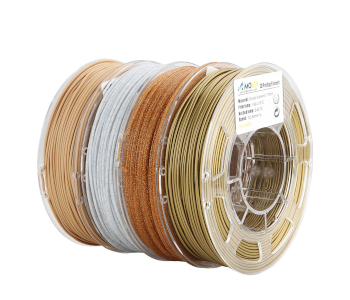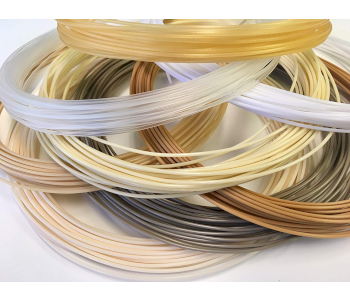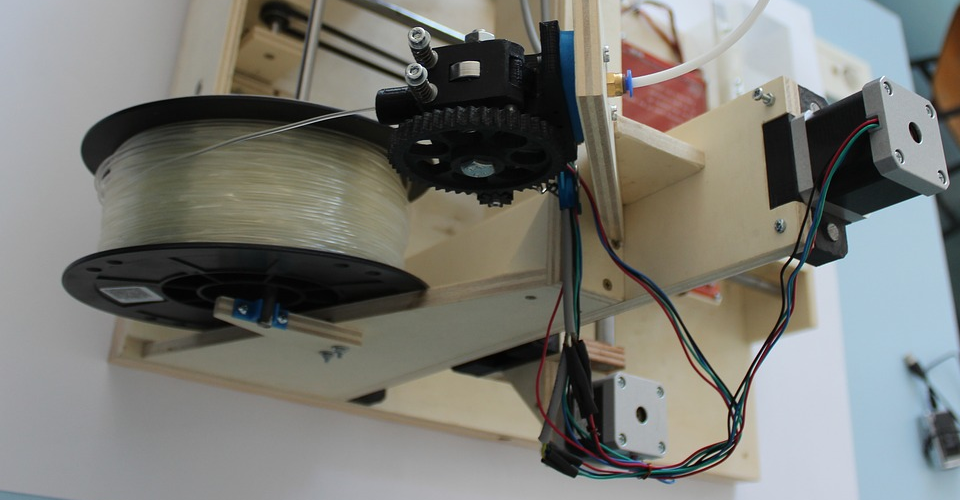How to Dry Your PLA Filament
Moisture is one of the most dangerous enemies when you’re dealing with plastic filaments for 3D printing. Not keeping your filaments moisture-free can result in them breaking down prematurely, your prints getting ruined, or worse, your extruder assembly getting clogged.
While there are a lot of ways to keep your filament dry, PLA is a particularly different material because of its sensitivity to high temperatures. Given the low melting temperature of PLA, what’s the best way to keep the filament dry or to dry it out before printing?
Best ways to keep your PLA filament dry before printing
When drying your PLA filament, the first thing to keep in mind is that PLA has a relatively low glass transition temperature of only 70 °C. This means that a filament roll exposed to temperatures around this value has a tendency to soften and fuse, making it unusable. Instead, any method that does not rely on direct heat application is preferable.
1. Keep your filament in an airtight plastic bag

The best way to dry your PLA filament is to make sure that it does not pick up any moisture in the first place. Filaments are typically shipped in vacuum-sealed plastic bags, so it’s reasonable to store them in a similar container. For best results, we recommend throwing in a few packets of desiccant with the PLA filament. This is the cheapest way of storing your filament to keep them from picking up moisture from the environment.
The downside of this method is that you can’t store a filament in an airtight plastic bag indefinitely. Plastic bags, even with an airtight seal, is still very slightly permeable to moisture. This means that your PLA filament, even when stored with some desiccant, will still end up absorbing moisture if kept in a plastic bag for several months.
Moreover, filament stored in clear plastic bags is highly prone to UV degradation. This is another problem that’s particularly more serious with PLA, as it simply does not have the chemical stability of other filaments like ABS or PETG.
2. Use a Mylar foil bag
If a plastic bag is unsuitable for long-term storage, then what type of container is? While you can get specially designed filament boxes, these are expensive and take up a lot of space. A more practical alternative is mylar bags or, more technically, vacuum-sealed bags made of Mylar foil.
Mylar foil consists of a very thin layer of aluminum metal laminated with a similarly thin layer of polyester resin. The result is a reflective, waterproof, durable, and low-friction material has been used extensively as food packaging material, protective surfaces for ducts, and decorative items.
The advantages of Mylar foil over clear plastic are two-fold. The thin layer of aluminum greatly enhances the moisture resistance of Mylar, so your filament should stay dry even after prolonged storage. It’s still a good idea to have a couple of desiccant packs in there to absorb any residual moisture from the filament. UV degradation is also arrested by the reflective outer of the Mylar foil.
3. Dry your filament in an oven
We know that we said that introducing any heat in the equation when drying PLA filament is a a bad idea. However, it’s not impossible if you have the right equipment.
To start off, you need a high-quality oven with accurate controls that can be set to temperatures as low as 40 to 50 °C. Although this is a good 20 °C below PLA’s glass transition temperature, the “low and slow” approach to drying PLA is the much safer route that ensures that you don’t end up with a fused filament.
If you can set your oven to a temperature this low, then you can leave the spool in there for four to six hours without problems.
Before you proceed to drying your PLA filament, it’s worth taking the time to make sure that your oven accurately reaches the temperature that you set it to. A small amount of drift from the set temperature is fine and normal, but a variance of more than 10 °C could be problematic.
To test the temperature accuracy of your oven, set it at the desired temperature and put a properly calibrated temperature inside. You must be able to see the temperature value without opening the oven. You may also use this test to determine how long of a preheating period you’ll need before the oven can achieve a stable temperature.
Why does a PLA filament absorb moisture?

Not all plastic resins are hygroscopic, or exceptionally prone to moisture uptake. It all depends on the chemical structure of the resin. Those with a lot of double bonds tend to have a lot of points where water can attach to via hydrogen bonding. This means that the water molecules become bound to the plastic material at the molecular level, making them just a little harder to remove.
Unfortunately, practically all thermoplastics used in 3D printing are characteristically abundant with double bonds, including PLA. While their chemical structure gives them the same characteristics that are desirable for 3D printing, it unfortunately comes with this one major drawback.
To be fair, other filaments material, such as Nylon and ABS, are much more hygroscopic compared to PLA. Compared to the other 3D printing filaments, PLA is already considered one of the least vulnerable to moisture uptake. However, the effect of excess moisture is still severe enough to warrant a significant amount of effort to avoid.
How will I know if my PLA filament has absorbed too much moisture?
If you’ve been able to store your filament properly, then you shouldn’t run into any moisture-related problems during printing. However, the 3D printing process is inherently full of troubleshooting, and you need to identify the symptoms before you can diagnose the problem. What are the problems that you should anticipate if you’re using a filament that has already absorbed a lot of moisture?
1. Brittle filament
A filament that has held moisture for too long will lose its elasticity, eventually turning brittle. A brittle PLA filament can be problematic because you might end up having your filament snap in the middle of a job. Moreover, this is not a reversible process. If you find that your PLA filament has become brittle due to excessive moisture intake, the best thing you can do is to recycle it or dispose of it responsibly.
2. Swollen filament
Moisture uptake tends to make a filament swell. By keeping track of the diameter of your filament using a digital micrometer, you can easily check for any significant moisture effects in your filament without having to go through the problems that only come up once you’ve started the printing process. Of course, you’ll need to have a baseline to detect any changes, so it’s best to take an initial measurement as soon as you receive your brand-new PLA filament.
3. Popping or hissing sound in the extruder
Once a moisture-laden filament runs into the heating element of your extruder, the entrapped moisture will expand and eventually turn into steam. The popping and hissing sound that this process makes is the most characteristic sign of a filament that needs to be dried. Of course, you might also see steam visible coming out of the extruder – if that’s not a clear sign, then we don’t know what is.
4. Uneven extrusion lines
The evaporation of moisture within the filament means that it will be almost impossible to get a consistent flow of filament through the nozzle. The overall effect will be layer lines with holes in them. Not only does this make your finished print visually unappealing, but it will also have reduced durability due to poor layer adhesion. Basically, your print will be so bad that you have no choice but to start over.
5. Severe stringing or blobbing
When moisture expands inside the extruder assembly due to heating, it also creates a lot of excess pressure above the nozzle which can force molten filament out. This over-extrusion problem creates blobs along layer lines.
Moreover, excess pressure in the nozzle can also cause stringing problems if your model has a lot of empty space where the drone needs to travel without extruding. Although it’s possible to avoid stringing by tweaking the retraction settings of your 3D printer, this still does not address the host of other problems caused by excess moisture in the filament.
Final thoughts
Although moisture uptake can be a much more severe problem with other filaments, PLA can also be a challenging material to dry because of its low glass transition temperature. If you’d like to limit yourself to drying methods that don’t employ heat, then you need to be prepared with the proper storage materials. No matter which filament you have, that is one of the easiest ways to avoid having them go to waste or running into a severe problem when you’ve already started printing.


